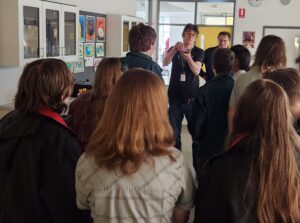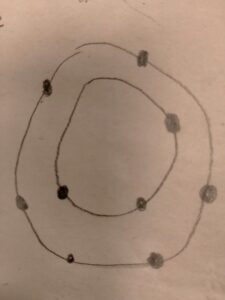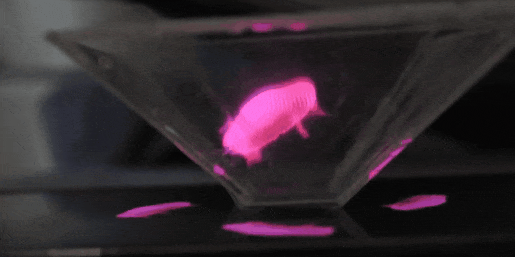
FLEET outreach coordinator Jason Major and Research Fellow Yik Kheng Lee (RMIT) visited St Brigid’s College, Horsham.
FLEET took a road trip to Horsham in regional Victoria to introduce 100 Year 8 and 9 students to quantum physics and the colourful world of light.
Year 8 students participated in range of hands-on activities such as the famous ‘Pepper’s Ghost’ visual illusion, and playing with lasers and prisms to understand reflection and refraction.
Meanwhile Year 9 students took their first ever dive into quantum physics to understand the quantum nature of the atom and electrical circuits, engaging students’ hands and brains simultaneously with Mexican waving to simulate electron waves, and construction of graphite circuits (using pencils, LED and 9V battery).
“The exercises helped students wrap their heads around the new idea that that electrons are (Mexican) wavy, and that electrical resistance causes the heat they have all felt coming out of their laptop and mobile phone,” says FLEET Research Fellow Yik Kheng Lee (RMIT).
“Comparison of the pre- and post-workshop evaluation data indicates that students developed a more in-depth or scientific conceptualisation of light, the atom and electricity,” says FLEET outreach coordinator Jason Major.
“Before we started, Year 8 students’ thinking about light focussed on what produces light (fire, flashlight) and what we can do with light (ie see stuff)…”
“Afterwards, they were considering what light is (it is a wave, and it has magnetic waves coming off it) and how light behaves to enable us to ‘see stuff’ (light reflects, and also changes direction as it passes through different mediums).”

Most Year 9 students’ pre-workshop perception of an atom resembled the basic Bohr model (in some cases lacking a nucleus).
The Year 9 students also showed a change in thinking, with their responses shifting from single words based on the source of electricity (batteries), what uses electricity (devices, TV) and the science of electricity (volts, amps, circuits), to deeper conceptualizations of electricity that reflected what they learned or observed in their activities.
Ie, students learned that graphite is conductive, but imperfectly so, and that therefore the LED gets dimmer (ie, because it is carrying less current) the further it gets from the battery, and the more graphite the current must traverse.
Two students’ responses reflected some recollection or learning about the quantum nature of the atom (ie, that electrons are waves).
Year 9 students also drew their perception of an atom as part of a pre- and post-workshop evaluation, with most students in the pre-workshop activity draw something that resembled a basic ‘Bohr’ model of the atom.
In the post-workshop activity (which unfortunately ran short of time), one student drew an atom closer to the quantum model that had been introduced by Jason earlier that day, including a superposition of electrons – ie, the concept that the electrons’ position around the nucleus is based on probability only.

A Year 9 student’s post-workshop perception of an atom seems to include the quantum concept of superposition of electrons.
“We just need to work on their knowledge of what charged particles make up the nucleus!” says Jason.


